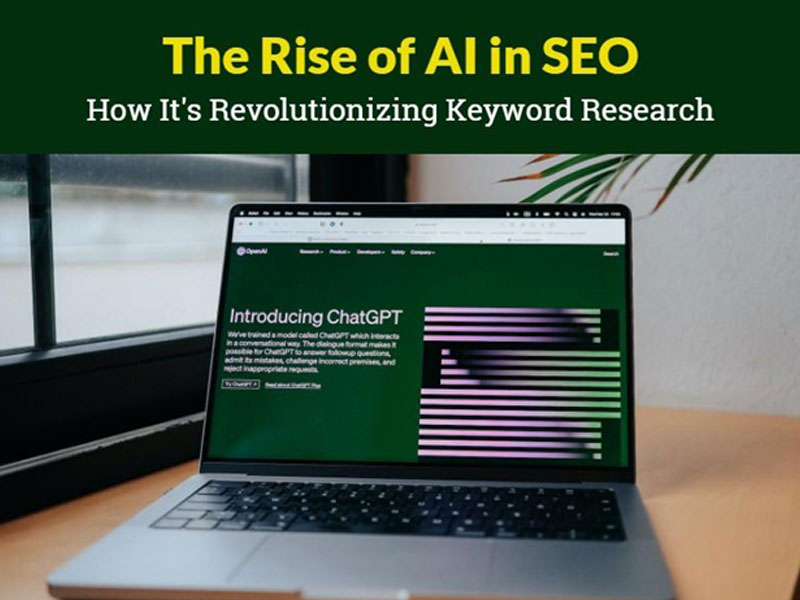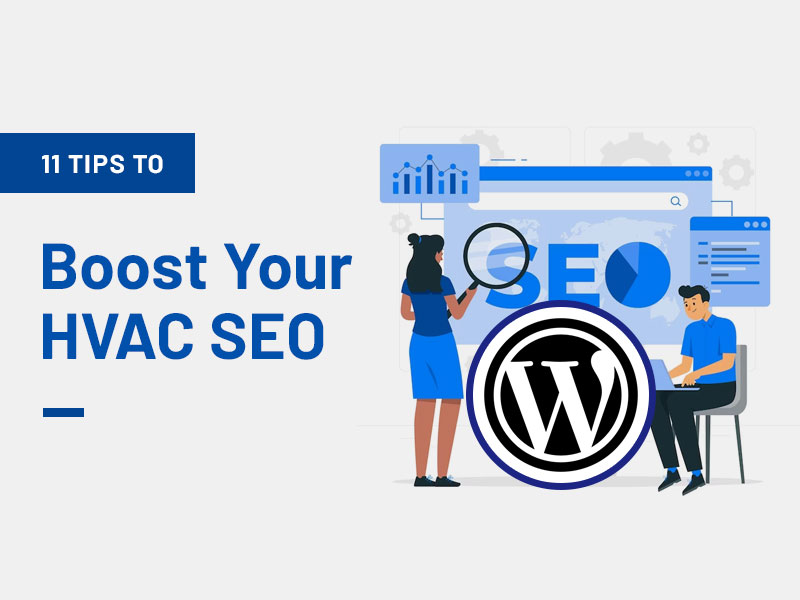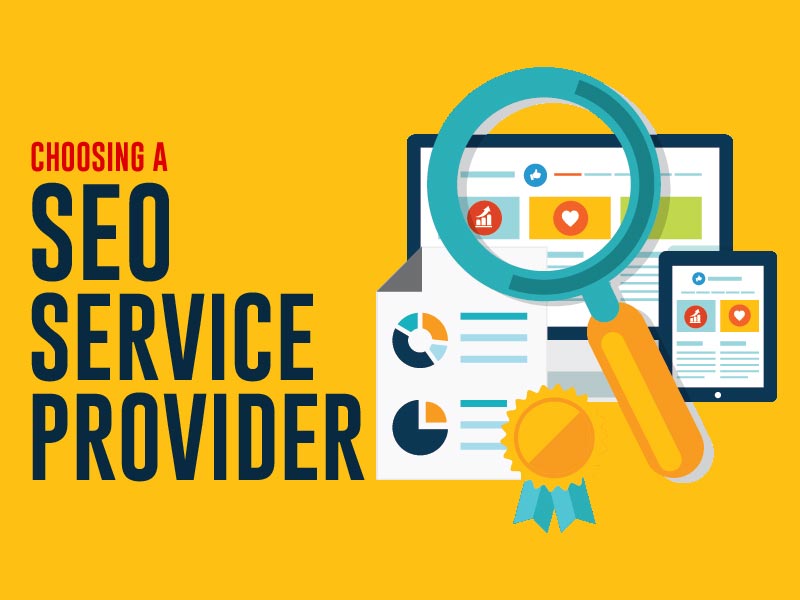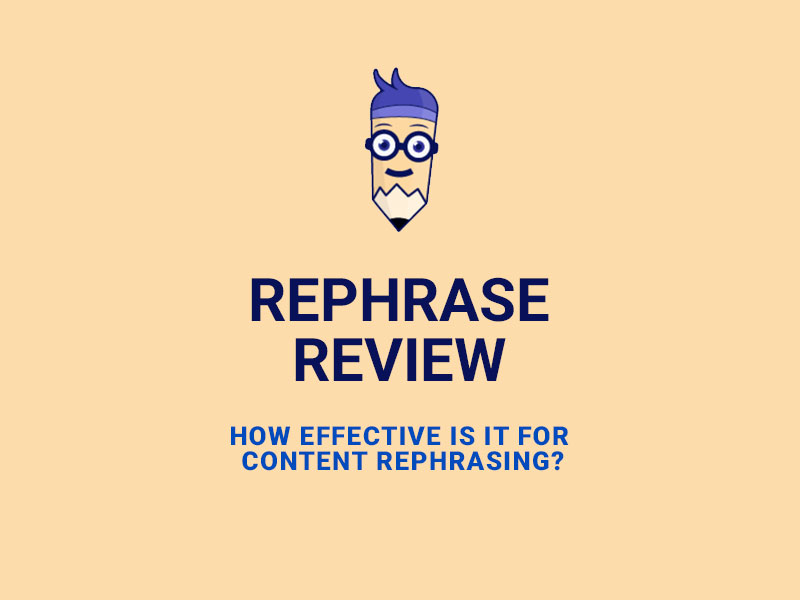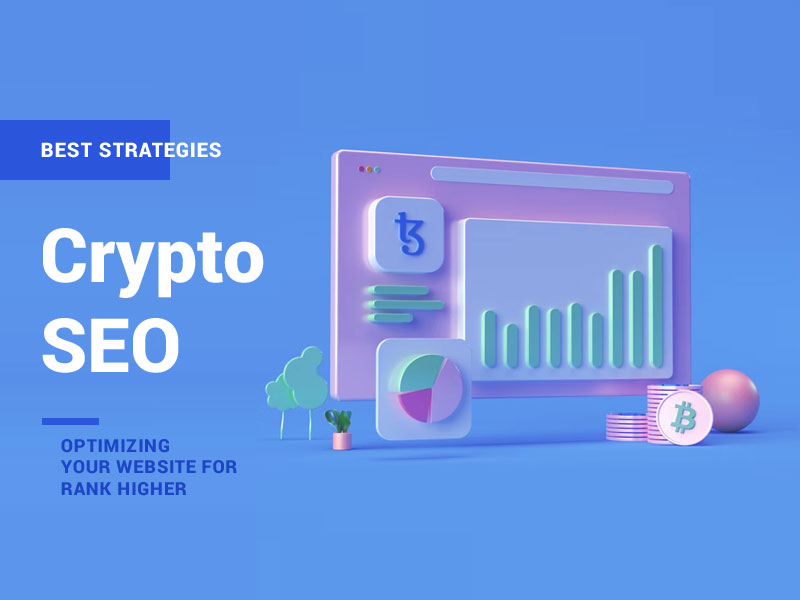I’m into research, and I love getting to the bottom of things.
But lately, I caught myself doing one thing over and over again – I rarely went past the first page of search results. Often, I would rephrase the search query rather than click over to page 2.
So I did some research (not surprising!) and discovered that nearly 75% of people had the same habit.
What does that mean for your business?
You’ve got to rank your site on page 1!
That may be easier said than done. With businesses all over the world fighting for this privileged page, there’s bound to be a lot of competition.
So if you’re also looking for ways to land your spot on page 1 of SERPs, hop aboard!
Today I’ll be discussing how you can do that by optimizing your site for search engines, rising above the others, and getting the attention you deserve.
But before I discuss some tips to help improve your rankings, let’s begin by taking a closer look at what Search Engine Optimization (SEO) is all about.
So grab a cup of coffee, and let’s get started.
A Better Understanding of SEO
Before we go any further, I’d like to point out that while SEO generally implies optimizing all search engines like Google, Bing, Yahoo, etc., I’ll be highlighting SEO from Google’s perspective. That’s because Google owns nearly 90% of all searches.
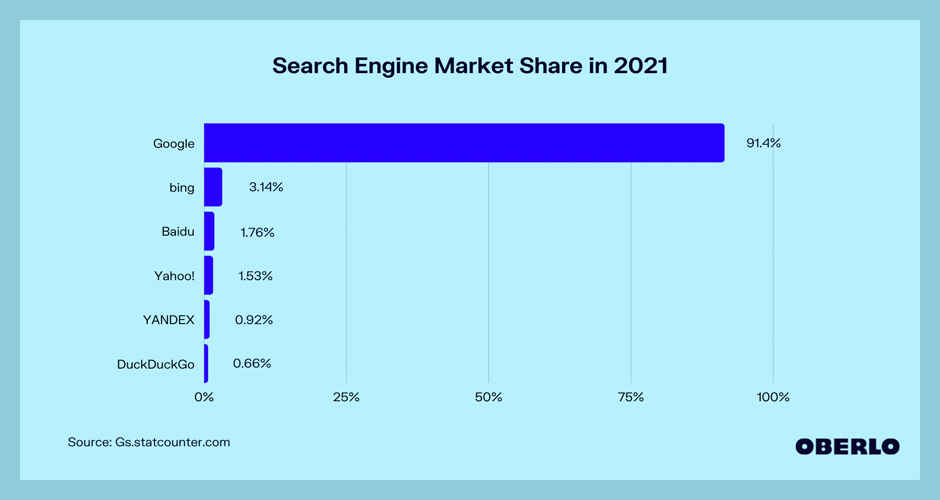
In simple terms, SEO is the part of digital marketing that focuses on making your website easy for search engines to find. (More on this in a bit.)
For those unfamiliar with certain terms or concepts mentioned in this article, consider browsing this comprehensive SEO glossary of terms. It will help demystify any jargon and provide a clearer understanding.
In other words, SEO involves implementing best practices that lead to more exposure on search engines.
In other words, SEO involves implementing best practices that lead to more exposure on search engines.
But SEO is more than just getting under Google’s radar.
It’s also about understanding search intent. What that means is that you need to recognize:
- the kind of questions people are asking
- the answers they’re looking for
- the words/phrases they’re using
- the type of content they prefer
So if you look at the bigger picture, you’ll notice that SEO is just as much about making your website search-engine-friendly as it is about understanding your target audience. In fact, you need to focus on both aspects in order to build a comprehensive SEO campaign.
Advantages of SEO
By meeting the basic SEO criteria (search engine-friendliness and aligning with search intent), you can:
- increase brand awareness
- connect with the right target audience
- drive more organic traffic to your site
- improve the quality of traffic landing on your website
- boost conversions
Yes, that’s a whole lot of benefits right there to impact your business’s bottom line. And this is only the tip of the iceberg. I could write an entire blog on the benefits SEO can bring to your business, but let’s save that for another day.
What’s that? Do you want to see proof?
No problem. Since I’m into research, I’ve got the numbers to back these claims.
- 70% of marketers agree that SEO is more effective than PPC.
- Almost 85% of buying intent starts with online research.
- Over 50% of your site’s traffic comes from organic search.
- Organic traffic can reel in more than 40% of a company’s revenue.
- SEO generates a 14.6% conversion rate (the percentage of leads that convert to paying customers). And that’s 8x the close rate of traditional marketing, which is 1.7%.
I’m pretty sure I don’t need to give you any more statistics to prove just how beneficial SEO is.
With such impressive results, who wouldn’t want to invest in SEO?
Okay, now that you know how important SEO is, let’s get down to business.
How Search Engines Work
Let’s take a moment to understand how a search engine works.
Search engines work by:
Crawling
Think of crawling as a way to discover new content, such as web pages, images, videos, etc. Search engine bots scour through content on the internet by following links on web pages to find new URLs.
Indexing
Once the content is discovered, it needs to be stored organized in Google’s index. This helps Google display all content that is relevant to a user’s search query. So an index is like a huge library full of information gathered from all the crawled sites on the internet.
Ranking
Whenever you enter a search query, Google generates a list of relevant sites in order of relevancy. You’ll notice that websites near the top of the list are more relevant to the query.
How does Google decide the order of the rankings?
There are over 200 factors involved. However, Google’s exact algorithms to rank sites in SERPs are a secret. Moreover, search algorithms and ranking factors are updated regularly.
But there are several well-known aspects that Google considers, such as:
- Relevance of content to search query
- Unique content
- Up-to-date content
- User’s location
- History of searches
- Mobile-friendliness
- Image optimization
- User experience
- Site structure
- Internal links
- Site speed
- Use of HTTPS
and much more.
The Right Way to Do SEO
I’m sure things are making a bit more sense now. So let’s dive into the basics of SEO that can drive the best results for your SEO campaign.
On the way, I’ll offer some on-page and off-page SEO tips to direct your efforts in the right direction. You’ll need both types of SEO activities in order to create a successful SEO strategy.
On-page SEO simply refers to SEO techniques you can apply to your website, such as keyword research, content optimization, Page performance optimization, internal linking, etc. On the other hand, off-page SEO refers to actions you can take outside of your website to impact ranking, such as backlinking, social media marketing, guest blogging, etc.
1. Identify Your Target Audience
SEO requires a systematic approach and planning to generate the best results like everything else in your business.
So instead of haphazardly throwing ideas around and hoping to hit the target, you’ll know which strategies can support your digital marketing campaigns.
So the first thing you need to do is identify your consumer base – who will interact with your website or read your blogs. Information such as behaviors, demographics, location, interests, etc., about the users, can help create a customer persona. This provides helpful insights into your potential target audience and allows you to understand how you can speak to them personally and influence their decisions.
2. Keywords research
Your SEO journey should begin with keyword research. It can pull all your SEO efforts together, increasing rankings and traffic.
Why is keyword research so important?
For starters, it’s an easy way to identify popular words and phrases that people are actively using in search queries.
This is beneficial for two reasons:
- You can create content around trending topics to ensure your content aligns with people’s interests and improves visibility in organic search.
- It can help plan your content strategy so that you can continue to create new content that contributes to the growth of your online business.
Just remember, when conducting keyword research, you need to look at the keyword’s monthly traffic volume and competitiveness. Ideally, you want to incorporate the right mix of uniquely valuable keywords (long-tail and short) that offer the biggest strategic advantage.
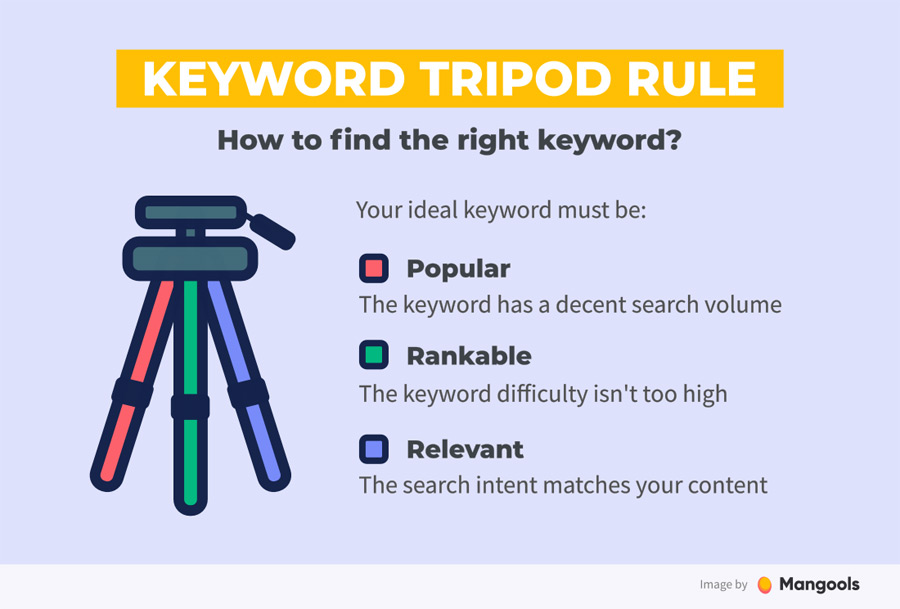
Source: Mangools
Okay, this is all good.
But where can I find these magical keywords?
I’m sure your first thought was a keyword research tool.
Good job!
Tools like Google Keyword Planner, SEMrush, Keyword Explorer, Ubersuggest, KWFinder, and Ahrefs Keyword Explorer are great options. These advanced tools enhance content creation and your SEO strategy.
But did you know there are several other ways to easily find keywords?
Lean in closer… I want to share a secret.
The king of search can offer helpful suggestions too!
Google Autocomplete, People Also Ask, and Related Searches are excellent sources of keyword ideas.
Look at how Google generated a list of keywords while I was still entering my query in the search box.
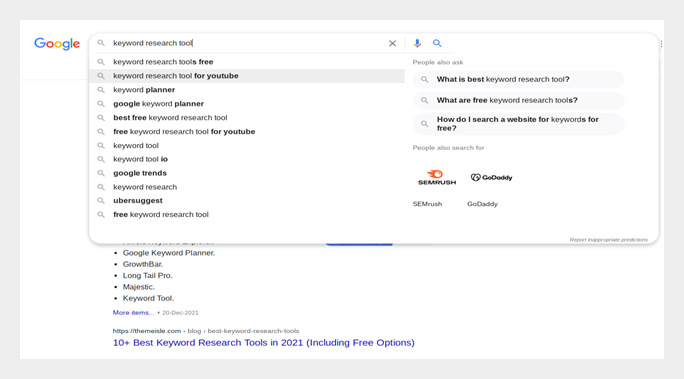
But you can’t stop here.
Finding trending keywords is a continuous process. It’ll help provide you with ideas for future content.
3. Use Keywords Wisely
The key to SEO success lies in keyword placement. In fact, it’s more important than keyword frequency.
Right. Now it’s time to use those high-quality keywords you found in your web pages and content (blogs, videos, images, etc.).
So the next question is, where?
Placing your keywords in strategic locations on the page can dramatically impact your website’s visibility, rankings, and traffic. The following places are an easy way to get your page noticed by search engines and enhance on-page optimization:
- URL
- page title
- heading tags
- page content
- meta description
- image descriptions
Having said that, to achieve search engine ranking success for a specific page, you need to identify multiple keyword phrases that are very similar. However, make sure the placement is natural because readability and usability still trump SEO.
Additionally, to improve the visibility of your website, use different keywords phrases on separate pages. Targeting too many unique keywords on one page will not allow it to rank for either keyword.
4. Create Valuable, Authentic Content
According to Search Engine Watch, high-quality content and link building are the two of the most important SEO signals for Google.
After reading this, most marketers will simply jump to the conclusion that writing a killer copy will be enough to rank their site. That’s not altogether wrong…
But how many people do you think will read a blog if the title doesn’t interest them?
Not many.
With that in mind, you should focus on creating a compelling headline before worrying about the copy. After all, a person will consider reading a blog only if the title is captivating enough.
So it’s not surprising that 36% of SEO experts say that the headline/title tag is the most important aspect of your page. People are likely to click on an attention-grabbing headline.
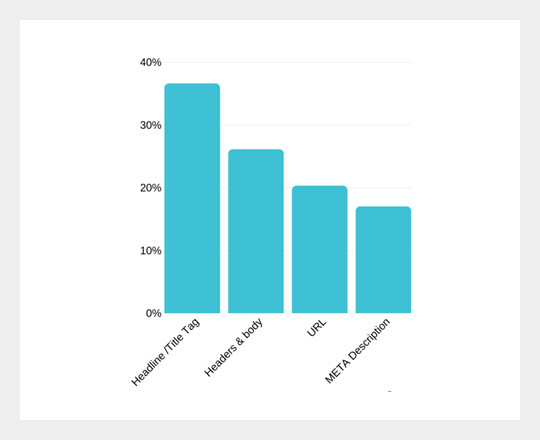
Once you brainstorm your titles, dive into creating engaging content that will keep visitors on the page longer. But remember, the quality of content is more important than quantity. So writing a 2500+ words blog isn’t going to get you anywhere if it doesn’t offer any value to your readers.
Here’s an extra tip: Google notices and rewards sites that publish unique, quality content that fulfills a searcher’s intent. But if you do it regularly, you get bonus points.
5. Build Links
You’re doing a good job so far. You’ve got a healthy list of keywords, and you were able to incorporate them into your content.
But you’re only halfway through.
Now you need to work on linking.
Google values pages with links, so the more links a page has, the better.
There are two types of links you need:
- Internal links: These are links in a website that direct users to the various pages of the same site. By connecting pages and posts on your website, internal links create a navigation pathway for your website that makes it easier to use, thereby improving UX and keeping readers on your website longer. More importantly, it helps Google bots to crawl and index your site.
- External links or backlinks: Links on other websites direct users to your site. So they’re a great way to improve your site’s credibility and website domain authority. Google notices authority backlinks and rewards you by increasing your ranking.
So which one should you focus on?
The best advice I can give here is to focus on building internal and external links. In fact, 42% of SEOs spend equal time on these linking practices.
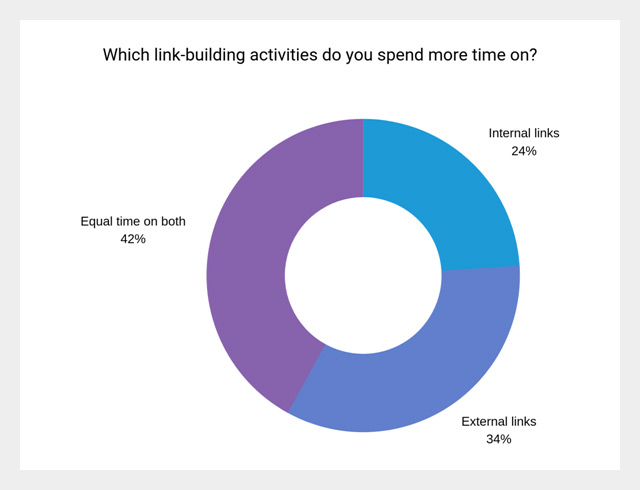
Let’s take a moment to get your linking efforts off to a solid start.
Internal linking tips
Internal links allow you to build authority. Some internal linking best practices include:
- Create lots of content.
- Link pages together naturally with simple anchor texts.
- Link only to relevant pages to ensure you’re adding value to users.
- Use a reasonable amount of links per page.
- To strengthen overall SEO, link to internal site pages rather than the homepage.
External linking tips
Surprisingly, I found that 55.24% of pages on the internet don’t have a single backlink. Yikes!
Don’t miss out on this opportunity to outrank your competitors because the more backlinks you have, the more traffic you’ll receive.
Some external linking best practices include:
- Link to reputable sites, preferably to recent, up-to-date pages.
- Check to see that the author is a credible expert on the topic.
- Don’t link to your competitors.
- Use descriptive keywords as your anchor text to help search engine spiders understand what the target page is about.
- Make sure external links open in another tab.
- Conduct link regularly audits to discover broken or outdated external links that tarnish UX.
Additional read: How to Get Quality Backlinks with Guest Posting
Furthermore, according to PageRank, the importance of a page is measured by the quality and quantity of the backlinks pointing to it. So if you write credible content regularly, you’ll be seen as a high-authoritative, trustworthy website that others will want to link to. And that gives you a better chance to rank higher in SERPs.
6. Incorporate Visuals
Long gone are the days when people surfed the internet merely for information. Nowadays, it’s all about enjoying the online experience.
That’s where visuals have made an impressive impact.
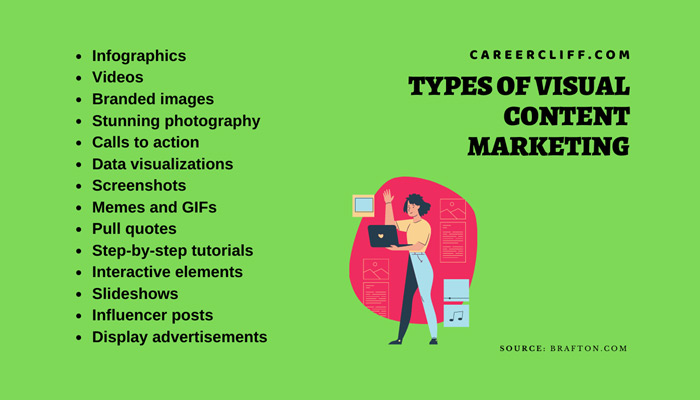
Source: Career Cliff
Visuals have become a more effective and efficient method of communication because the information is bite-sized and more engaging. This increases onsite dwell time and enhances UX, both of which are key SEO metrics.
So adding visuals to your website can give your site a good boost in ranking. In fact, content with visuals typically receives up to 94% more views.
More impressively, by incorporating video content, you’re 53 times more likely to show up on the first page of SERPs.
But simply using visuals isn’t enough. You need to optimize them for SEO as well.
Here are some tips to help you out.
- Use high-resolution photos.
- Optimize images by using keywords in the description and alt text.
- Add tags to images so that Google can accurately index your site.
- Compress images to avoid slowing down the speed of your site.
- Use an embed code with infographics to facilitate sharing on other websites and earn backlinks.
- Use transcripts for videos.
- Pay attention to the title, thumbnail image, and description of a video.
- Google indexes only one video per page. If you plan to use multiple videos on a page, make sure to use the best one first.
- Avoid embedding the same video on multiple pages.
7. Maximize Page Speed
People are always in a rush, and they’re just not as patient as they used to be. So when a page takes longer than 3 seconds to load, 53% of mobile sites are abandoned.
But what could be worse than waiting for a page to load?
Losing your customers to your competition!
That could potentially be the case if you don’t tweak your page speeds.
You’ll be surprised to learn that page speed optimization is one of the quickest ways to improve rank in SERPs. So without any more delays (pun not intended), here are some ways to speed things up:
- Resize images: Often, images are larger than required and in the wrong format. Resizing and the correct image format can help shed gigabytes of size and boost load speeds by nearly a second.
- Convert images to JPEG and compress them.
- Delete duplicate and unnecessary images and videos.
- Limit the plugins and tools your site needs.
- Use a web hosting provider that offers good service and speeds.
- Implement lazy loading so that some parts of the website load immediately while others load as the user scrolls down the page.
8. Become Mobile-Friendly
According to StatCounter, by 2020, 55% of all online traffic around the world came from mobile. And the statistics will continue to grow in the coming years. Just take a look at these numbers:
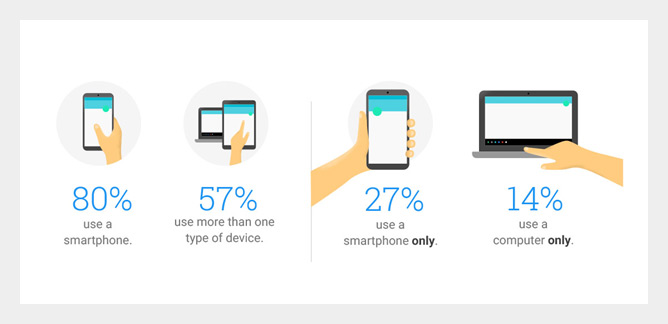
Source: Google
Yep, becoming mobile-friendly is vital if you want to remain competitive.
So what should you do?
There are several ways you can optimize for mobile, such as:
- Use a responsive template that ensures your website content will adjust automatically to mobile devices’ screen size.
- Make videos compatible with smart devices.
- Images will shrink to fit smaller screens, so use high-quality, closely-cropped images.
- Use decent-sized CTAs and buttons to make your website easy to use and enhance UX.
While optimizing for mobile is crucial, you should ultimately ensure your website works flawlessly across all platforms. After all, you want to connect with your target audience no matter what device they have.
Final Piece of Advice
SEO is a complex mix of ranking strategies intertwined with ever-changing Google algorithms. So managing SEO can get challenging.
Wondering if you should do SEO on your own?
I’ll be totally honest.
DIY SEO is a suitable option if you’re a small business on a tight budget that can donate at least a couple of hours every week for SEO.
But things will get more challenging as your business grows and your competition gets stronger.
Therefore, I suggest that you consider hiring a WhiteLabel SEO company. They can help create keyword-optimized content and a natural link-building strategy, among other things.
More importantly, they have the skills, experience, and tools to track, monitor, and analyze SEO campaigns and ensure they produce the right results.
Partnering with the wrong company could cost you money and harm your site if they use improper SEO techniques.
How can you find the right SEO consultancy for your business?
You’ll need to do a little research. Ideally, you want to get in touch with an agency with a talented team, years of experience in the industry, and access to the best SEO tools.
Furthermore, you should ask for samples of their success. An established SEO agency will have a portfolio of clients or case studies ready. Consider talking to previous clients about their experiences and results and looking into their rankings and backlinks.
Over to You
As search engines are getting smarter, you need to ensure that your web pages are crawlable and you create content that answers your audience’s queries.
At the end of the day, whether you decide to do SEO on your own or hire an agency, one thing’s for sure – SEO has to be on your digital marketing to-do list.
It’s a great way to raise your rankings and gain visibility in SERPs. As a result, you’ll receive more organic traffic to your website, helping to generate more leads, sales, and revenue.
But if you’re looking for other ways to get your business out there, you need to consider adding social media to your campaigns. It’s the up-and-coming form of digital marketing that’s taking the next generation of consumers by storm.
But let’s leave this topic for another day, shall we?


